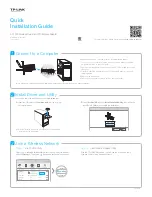
User Manual
RM169-1
Pag. 21
Doc. MI004760-E
Rev. 0
www.seneca.it
ALL RIGHTS RESERVED. NO PART OF THIS PUBLICATION MAY
BE REPRODUCED WITHOUT PRIOR PERMISSION.
11.3.
MODBUS OPERATING MODE
This mode of operation provides one Master unit (star centre) and one or more slave units. The Master unit must
be connected via the serial interface to a PC (or PLC) on which a SCADA application is running, which uses the
communication protocol Modbus RTU. The SCADA application is the heart of the system and has the task to
read and/or write the parameters of the different nodes of the network using the Modbus protocol. The Master
radiomodem, connected to the SCADA, uses the radio link to transmit the packets received from the serial line.
The required addressing is realised by the use of an internal routing table. To do this the Master radiomodem
evaluates the first byte of the received modbus packet, which, in the Modbus protocol, corresponds to the
address of the node which you want to communicate with. Each node address (1 to 254) may be associated
with an independent radio path.
All radio modems in the network (both Masters and Slaves) must be configured with an unique address (the "Its
address" field). The routing table is used to indicate the path of the packet radio, in this way, the packet arrives
to the target radiomodem directly or via all the interested digipeaters. In the routing table, the node address
number 255 is reserved for the broadcasting modbus packet. In this case, the Master radiomodem, when it
receives a packet with address zero (packet broadcasting type) from the SCADA application, uses the node
number 255 of the routing table to route properly the radio packet. The broadcasting mode cannot be
implemented if there is a radio modem unit that cannot communicate with all the other units of the network,
because in this case one or more units would not receive the broadcasting packet. This is the case of a network
geographically widespread in mountainous areas or where there are many obstacles.
The node addresses must be unique, in the same network can exist up to 254 nodes distributed according to
need among the slave units in the network. Avoid to assign the node address 255, which, as explained, is used
for the broadcasting packet. If, in a radiomodem unit, the internal peripherals are used, this radiomodem is seen
as a modbus node in the network. It has its own modbus address, through which it is possible to read and / or
write the internal peripherals of the radiomodem (digital inputs / outputs, pulse counter and analog inputs /
outputs).On each radiomdem up to 32 external Modbus nodes can be connected via the RS485 serial interface.
Each of these external nodes has its own modbus address, to be able to interrogate each node is necessary
that all the nodes belonging to the same slave units use the same routing, that is, the same sequence of
radiomodem addresses, which, in this case will be common to more node addresses (simply copy the addresses
of the radio path in every node address connected to the same radiomodem) given that the modbus packet must
pass through the same radiomodem.
At every slave radiomodem an external Modbus devices (I / O analog, digital or mixed) unit can be connected
via the RS485 interface. The maximum number external nodes is of 32 units. The maximum number of slave
radiomodes that may be present in a network is dependent on the number of modbus nodes connected to each
slave unit and also by the number of Slaves that use its internal peripherals: in this case each Slave radiomodem
has one modbus node address that is subtracted to the total of 254 modbus addresses available. Since the limit
is of 254 addresses, the sum between the radiomodem units (of which are used the internal peripherals) and
the external nodes connected cannot exceed this value. For example, if a network contains 25 slave radiomodes
used as modbus nodes (ie, if its internal peripherals are used), the maximum number of available addresses of
the external nodes are: 254-25 = 229; distributed on each slave radiomodem according to the requirements and













































